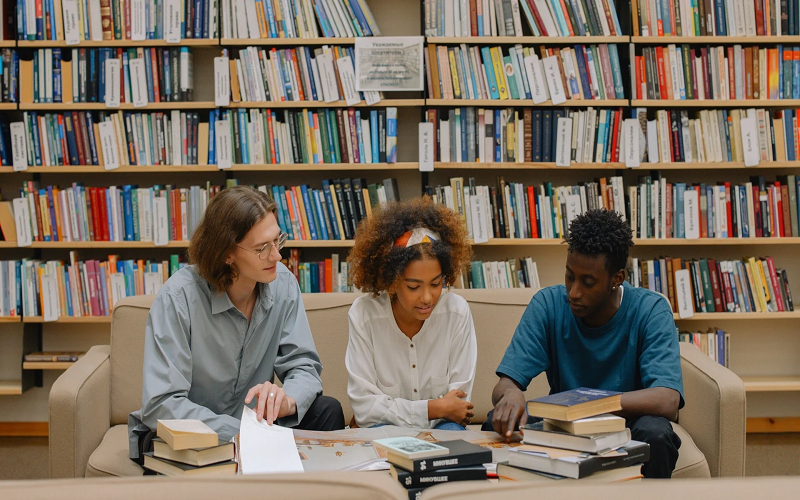Origami isn’t just a paper craft; it’s a doorway to discovery. As classrooms around the world look for creative ways to connect children with pressing global issues, one technique stands out: teaching about endangered animals through origami. This approach transforms passive learning into hands-on engagement, allowing students to explore biodiversity, conservation, and empathy, all while folding paper. Read on to learn how this beautiful intersection of art and science can be integrated into early education. And how educators who have pursued a teacher training course in Singapore can use it to inspire a deeper connection with the natural world.
How Origami Inspires Young Learners?
Here are some of the reasons why origami inspires young learners to learn about endangered species around the world:
- Building Environmental Awareness Through Hands-On Learning
Folding a piece of paper into the shape of an African wild dog or a Karner blue butterfly allows children to understand the fragility of life, both metaphorically and literally. Origami introduces children to species at risk in a memorable and impactful way, creating an emotional connection that drives home the importance of conservation.
- Nurturing Empathy and Emotional Intelligence
Children develop empathy when they work with their hands and hearts. Creating endangered animals out of paper enables them to “care” for these animals in a symbolic way. The emotional engagement that comes with making and learning about vulnerable creatures often leads to more thoughtful conversations around nature and sustainability.
Cognitive Benefits of Origami-Based Lessons
Let’s get to know some of the cognitive benefits of origami-based lessons:
- Boosting Memory Retention
The process of folding paper into a recognizable animal activates multiple areas of the brain. Students use fine motor skills, visual processing, and sequencing—all of which contribute to improved memory retention. Lessons presented through origami are more likely to be remembered because they are unique, engaging, and multi-sensory.
- Encouraging Creative and Critical Thinking
Origami also requires students to follow steps, think spatially, and solve problems—all vital skills in today’s education landscape. As students learn to fold and manipulate paper into specific shapes, they learn persistence, creativity, and how to work through challenges.
How to Structure an Origami Lesson on Endangered Animals
Here is how you canteach kids about endangered animals through a hands-on origami lesson that blends art with environmental awareness:
- Choose the Right Paper and Tools
Start with precut origami paper or guide students to cut squares from standard paper. Avoid paper types that are too flimsy or too stiff. Preparing materials ahead of time reduces distractions and maximizes engagement.
- Practice the Models Before Teaching
Choose origami animals that align with your learning objectives and student skill levels. Practice them beforehand so you can guide the class smoothly. Consider scaffolding—start with simple models and move toward complex ones to build confidence.
Instructional Strategies for Different Learning Styles
Here are some of the effective instructional strategies to raise awareness among your students about endangered species around the world through origami according to different learning styles:
- Direct Instruction Approach
Begin the lesson by selecting a simple animal origami model—such as a turtle, frog, or butterfly. Use a step-by-step demonstration, either through live modeling or a guided video, ensuring that students follow along at their own pace. As each fold is made, take the opportunity to narrate facts about the animal, emphasizing why it is endangered.
Complement the folding with visuals, short videos, or storybooks that portray the animal’s habitat, threats, and role in the ecosystem. This approach caters to visual and kinesthetic learners while reinforcing content through structured repetition.
- Inquiry-Based Learning
Let students research endangered animals on platforms like the IUCN Red List. Ask them to choose an animal and find an origami tutorial to match. This autonomy boosts engagement and develops research skills. Students can present their findings and a folded model to the class, integrating public speaking and storytelling elements into the activity.
- Place-Based Learning
Focus on local endangered animals to build relevance. For example, students in Southeast Asia can fold species like the Sunda pangolin or helmeted hornbill. Teachers can use maps, local news clippings, or conservation videos to illustrate where these animals live and why they’re under threat. This approach nurtures a sense of environmental responsibility and civic awareness, helping children understand their role in protecting local ecosystems.
Linking Origami to Broader Educational Goals
Origami integrates well with cross-disciplinary learning. It blends science (endangered species), geography (animal habitats), art (paper folding), and language (discussion and storytelling). For teachers pursuing a nursery teacher training course in Singapore, incorporating such multi-modal strategies is vital for delivering a holistic early learning experience. It reflects a holistic early education approach, fostering cognitive, emotional, and social growth through integrated, meaningful activities.
Bottom Line
Teaching about endangered animals doesn’t require a trip to the zoo; it can begin with a piece of paper. Origami turns conservation education into a creative, memorable, and empowering experience for children.
Educators who learn modern pedagogical approaches, such as those included in a teacher training course in Singapore, are equipped to bring these interdisciplinary techniques into their classrooms. Likewise, early childhood educators undergoing nursery teacher training in Singapore can find inspiration in how such simple tools can shape global citizens from a young age.
By teaching students to fold with care, we’re also teaching them to care about animals, about the planet, and about their power to make a difference.





